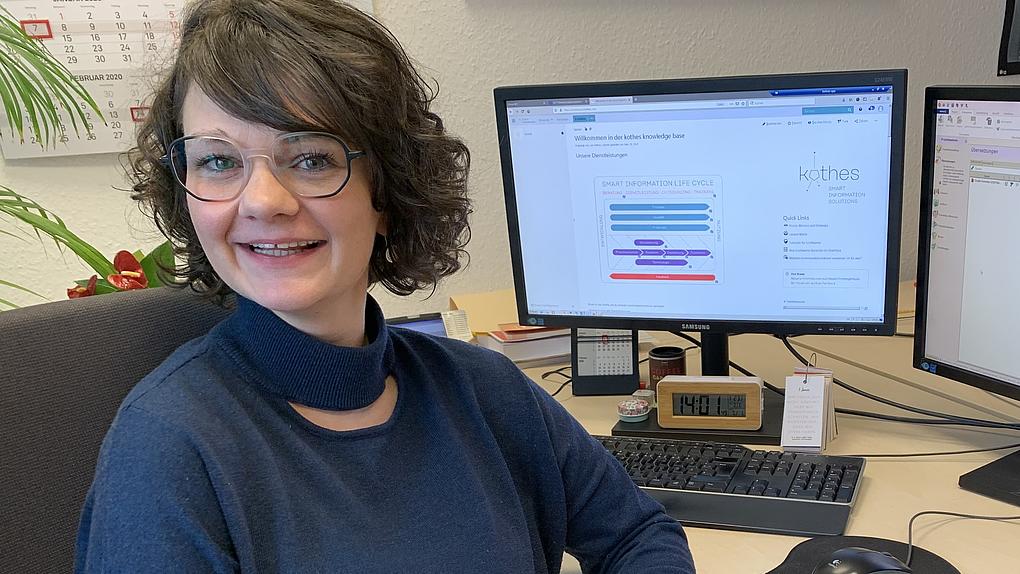"Nothing is as constant as change."
It's not clear from whom this saying actually originates. There's no doubt, however, that it describes daily life in Translation Management extremely accurately. In an industry for which requirements are constantly changing, thanks to new technologies, one of our main tasks is to keep pace with everyday change in this dynamic environment.
The technological innovations are but only one aspect. The job title already reveals that the requirements for a Translation Project Manager are interdisciplinary: We need to know the translation profession, but we also need to be at home within project management. For the former, a degree in Linguistics is helpful, but far from sufficient. How to handle a project in such a way that the agreed service is made available to the customer on-time and with high quality, and at the same time cost-efficient, is the other important skill that must be mastered in this profession. And it's this combination of linguistic expertise, project management skills and mastery of various tools that makes the Translation Project Manager the most versatile individual in this industry.
At kothes, a Translation Project Manager is responsible for up to 1,000 projects per year. It's our goal to find a customised solution for each of them. The successful completion of a project is the end of a journey of sorts, during which we Translation Project Managers can demonstrate our versatility.
The giant leap over (the many) pitfalls
First of all, a combination of sales experience and skilful calculation are required when it comes to preparing a quotation. This also includes the selection of the appropriate Translator. This involves taking a close look at which Translator is the most appropriate for the type of text and the specialist field, and whether there are any time restrictions that need to be considered. If our offer meets all the criteria of the request, then the first hurdle has already been cleared.
For new customers, we define our objectives in a joint kick-off meeting and establish the processes that are to apply to the translation project. In this way, we ensure process transparency for the customer, and all individuals involved are aware of the requirements for a successful translation, within an acceptable time and price framework. Our Translation Project Managers play an important role as intermediaries, both between the customer and the Translator – and internally, between our Quality Management, Technical Editorial and IT departments.
Once the project has been commissioned, the journey continues: the data must then be prepared. The majority of data consists of Word documents, Excel spreadsheets, InDesign files or XML data from Content Management Systems. At this early stage, we lay the foundation for a high-quality translation. Difficulties can arise during preparation due to the format, incomplete translation memory databases, missing reference files or restricted access to terminology data. Our task here is to identify weak points and potential problems right at the start of the project – and to ensure from the outset that they don't interfere with the translation later on in the project. In order to stay on the ball, we familiarise ourselves with the pitfalls at an early stage so that we can elegantly step over them instead of getting stuck in them. If the documents come from our own Technical Editorial staff, this section of the journey can be mastered quickly: the dovetailing of the Technical Editorial and Translation Management staff ensures that the translation process runs smoothly, as soon as the texts are created.
The actual translation is still performed by a real human – in spite of all the developments with the use of machines and artificial intelligence – by an experienced Translator who is well-versed in the specialist area of the text and translates it exclusively into his or her own native language. Especially in the field of technical documentation, however, software tools can demonstrate their strengths in the management and analysis of data: so-called CAT tools (CAT = Computer-Assisted Translation) with translation memory systems and terminology databases not only support the Translator. We Translation Project Managers also benefit from the project management components of these tools, as well as from the automatic checks that we can use during individual quality assurance steps and which form an integral part of every translation project. For example, in order to achieve the goal without stumbling, an automated spell check is performed, segments are compared, extra spaces are deleted, and the terminology is cross-checked for consistent usage.
During the home stretch of the project, "manual work" again becomes the order of the day: depending on the format, a DTP (Desktop Publishing) Specialist or a Graphic Designer, and sometimes both, are responsible for the finishing touches. Finally, the Translation Project Manager must check that all customer requirements have been met and correctly implemented, and then comes the actual delivery of the translation. At this point the project is complete, and the Translation Project Manager's performance is the last thing we need to analyse, with respect to whether any general conclusions could be drawn for the specific project.
Always firmly in the saddle (even when the going gets rough)
To tell the truth, the majority of projects are not quite typical, as was just described. Tight schedules, special technological requirements or complex graphic and layout work can be additional obstacles that make a project's progress more difficult. Last-minute orders and source documents that are difficult to process by machines are also not uncommon. In such situations, the constant change in the Translation Project Manager's day-to-day work regularly demands a characteristic that comes into play: flexibility. In combination with years of experience and the efficient use of our systems, our ability to adapt our processes at each stage of the project keeps us planted firmly in the saddle, even under trying conditions.
Last but not least, one characteristic is critical throughout the entire journey: communication skills. At the intersection of Technical Editorial, Translation, IT and Graphics, we in Translation Management have the task of meeting the various requirements equally well. This requires a high level of communication skills – also because of the international working environment with colleagues and contacts of many different nationalities. Thanks to the automation of administrative processes using CAT tools, we therefore have more time for everything that ultimately only one person can do: quality assurance, maintaining working relationships with translators and, of course, nurturing long-term relationships with our customers.

